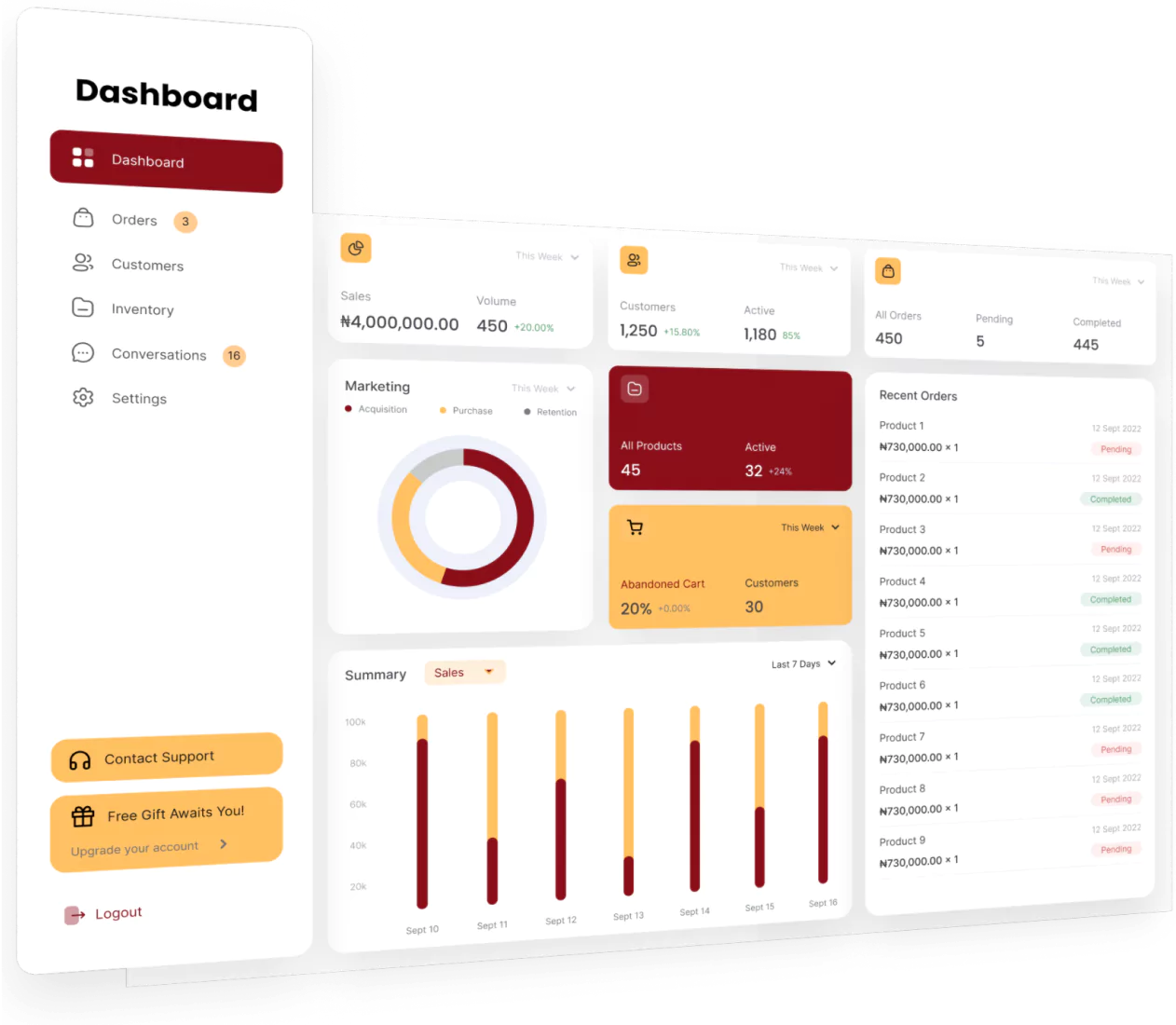Cash flow is the lifeblood of any business, yet many companies struggle to maintain a steady financial balance. Profitable companies can face liquidity issues, delayed operations, and economic instability without proper cash flow management.
Cash flow management software plays a crucial role in helping businesses track, analyze, and optimize their cash inflows and outflows in real-time.
Effective cash flow management ensures a company has enough funds to cover expenses, invest in growth, and navigate economic uncertainties. For managers and C-suite executives, mastering cash flow is key to making informed financial decisions and securing long-term success.
This article’ll explore why cash flow management is essential and how the right tools can help your business stay financially resilient. Keep reading to discover strategies that will enhance your company’s financial health and sustainability.
Table of Content
Content Lists

Key Takeaways
|
What is Cash Flow Management?
Cash flow management is the process of monitoring, analyzing, and optimizing the movement of money in and out of a business. It is about tracking incoming revenue from sales, investments, and other sources while ensuring that outgoing expenses such as payroll, rent, and operational costs are managed efficiently.
Effective cash flow management is essential for maintaining financial stability, avoiding cash shortages, and making strategic decisions for growth. By understanding their cash position, businesses can plan for future expenses, invest wisely, and ensure they have sufficient liquidity to meet their obligations.
With the right strategies and tools, businesses can improve cash flow efficiency, minimize financial risks, and create a more sustainable financial future.
Why Cash Flow Management Is Important for Business Success
Effective cash flow management is essential for maintaining a financially healthy and sustainable business. It ensures that a company has enough liquidity to cover expenses, invest in growth, and navigate financial challenges. Here are the key reasons why managing cash flow is crucial for business success:
- Ensures financial stability: Proper cash flow management helps businesses maintain a steady balance between income and expenses. By tracking cash movements, companies can avoid liquidity shortages and ensure they always have enough funds to operate smoothly.
- Prevents cash shortages: Even profitable businesses can struggle if they run out of cash at the wrong time. Managing cash flow effectively ensures that a company can meet its obligations without delays, such as paying employees, suppliers, and other operational costs.
- Supports business growth and investment: A well-managed cash flow allows businesses to reinvest in expansion, whether through hiring new talent, upgrading equipment, or exploring new market opportunities. Growth initiatives may be delayed or impossible to execute without sufficient cash reserves.
- Improves decision making: Understanding cash flow patterns enables business leaders to make informed financial decisions. With clear insights into income and expenses, companies can plan budgets, negotiate better payment terms, and allocate resources more effectively.
- Reduces financial risks: Poor cash flow management can lead to debt accumulation, missed payments, and financial distress. Businesses can minimize risks and avoid costly financial setbacks by monitoring and optimizing cash flow.
Businesses can build a solid financial foundation by prioritizing cash flow management, ensuring long-term success and stability. Implementing the right strategies and tools can make cash flow tracking more efficient and reduce monetary risks.
The Benefits of Effective Cash Flow Management

Managing cash flow effectively is essential for business success, as it provides financial stability and supports sustainable growth.
A well-structured cash flow management system helps companies optimize their resources, reduce risks, and improve overall financial health. Here are some key benefits of effective cash flow management:
- Improved financial stability: By ensuring that incoming and outgoing cash is well-balanced, businesses can maintain steady operations without facing unexpected financial shortfalls.
- Better risk management: Tracking cash flow allows businesses to identify potential financial risks early, helping them make informed decisions to avoid liquidity crises or unnecessary debt.
- Stronger business growth: With a clear understanding of cash availability, companies can confidently invest in new opportunities, expand operations, and develop new products or services.
- Enhanced decision making: Accurate cash flow insights enable business leaders to make strategic financial decisions, such as managing expenses, optimizing investments, and negotiating better payment terms.
- Increased profitability: Effective cash flow management helps businesses reduce unnecessary expenses, improve payment collection, and maintain a healthy profit margin over time.
- Better supplier and investor confidence: Maintaining a positive cash flow strengthens relationships with suppliers, lenders, and investors, as it demonstrates the company’s financial health and ability to meet its obligations.
How to Manage Cash Flow Effectively
Managing cash flow effectively is crucial for business stability and growth. Here are five key strategies to ensure a healthy cash flow:
- Monitor cash flow regularly: Tracking your cash flow helps you understand your financial health and identify potential issues early. Use accounting software or simple spreadsheets to record all inflows and outflows. Regular monitoring allows you to make informed financial decisions and avoid cash shortages.
- Speed up receivables: Delays in customer payments can disrupt cash flow. To prevent this, issue invoices promptly, set clear payment terms, and follow up on overdue payments. Offering discounts for early payments or using automated invoicing systems can also encourage faster collections.
- Control expenses wisely: Reducing unnecessary expenses helps maintain positive cash flow. Review your costs regularly, negotiate better deals with suppliers, and cut non-essential spending. Prioritizing essential expenses ensures your business remains financially stable.
- Maintain a cash reserve: Unexpected expenses or slow sales periods can put pressure on your finances. Having a cash reserve acts as a safety net, allowing you to cover operational costs without relying on external funding. Aim to save at least three to six months’ worth of expenses.
- Plan for seasonal changes: If your business has seasonal fluctuations, preparing in advance is crucial. Save extra cash during peak seasons to cover lower-income periods. Adjust inventory, staffing, and marketing strategies accordingly to maintain financial stability throughout the year.
By focusing on these five strategies businesses can improve cash flow management, reduce financial stress, and ensure long-term success.
The Role of AP Analytics in Enhancing Cash Flow Management
AP analytics is a valuable tool that enhances transparency by pulling and displaying detailed data from accounts payable records. With this clear visibility, businesses can identify areas for improvement in their AP processes, optimize cash flow, and strengthen financial management.
This is especially important because accounts payable plays a crucial role in maintaining a company’s cash flow health.
By using an analytics tool, businesses can gain clearer insights into key financial aspects, making it easier to manage payments and optimize resources effectively.
- The proportion of payments made through different methods.
- Potential risks associated with fraudulent transactions.
- Strategies for enhancing the efficiency of the accounts payable process.
- Outstanding days payable (DPO) and its impact on cash flow.
- Detection of duplicate payments to prevent financial discrepancies.
- Incentives and rebates earned from electronic payment transactions.
Cash Flow Formula
Understanding the cash flow formula is essential for evaluating a company’s financial health. By calculating cash flow accurately, businesses can track their liquidity, plan for future expenses, and make informed financial decisions.
Below is a breakdown of the key components of the cash flow formula and how they contribute to overall financial stability.
Basic cash flow formula:
Cash flow=Total cash inflows−Total cash outflows
Key components:
Total cash inflows: This includes all sources of cash received by the business, such as revenue from sales, loan proceeds, investments, and any other income.
Total cash outflows: This covers all business expenses and payments, including operational costs, loan repayments, salaries, rent, and supplier payments.
Detailed cash flow formula (using operating, investing, and financing activities):
Net cash flow=Operating cash flow+investing cash flow+financing cash flow
Key components:
Operating cash flow (OCF): Cash generated or used from core business operations, such as revenue from sales and payments for expenses.
Investing cash flow (ICF): Cash spent or received from investments, including purchasing or selling assets like equipment and properties.
Financing cash flow (FCF): Cash flow from funding activities, such as issuing shares, repaying loans, or paying dividends.
Common Cash Flow Management Issues
When managing cash flow, businesses often face several challenges that can hinder their financial stability. Recognizing and addressing these issues early is key to maintaining a healthy cash flow.
Below are some of the most common cash flow management issues and their potential solutions:
1. Late payments from customers
Late payments can create a significant gap in cash flow, making it difficult to cover operational expenses.
To tackle this issue, businesses should establish clear payment terms, send timely reminders, and consider offering discounts for early payments to encourage prompt settlement.
2. Overstretched expenses
Spending more than what the business can afford, especially in areas like overhead or unnecessary investments, can strain cash flow.
Regularly reviewing expenses and prioritizing critical costs will help avoid overspending. It’s also helpful to set aside savings for periods of lower revenue.
3. Inaccurate cash flow forecasting
Poor cash flow forecasting can lead to unexpected shortages. Without a clear picture of future inflows and outflows, businesses might struggle to plan adequately.
Using data-driven tools and regularly updating forecasts can improve accuracy and provide a better understanding of cash flow patterns.
4. Seasonal fluctuations
Businesses with seasonal sales often face challenges in managing cash flow during off-peak months. By saving during high-demand periods and planning ahead for slower months, businesses can balance cash flow throughout the year.
5. Inventory management problems
Improper inventory management can lead to either overstocking or understocking, both of which negatively impact cash flow. Regularly assessing inventory levels and adjusting according to demand can help ensure cash isn’t tied up in unsold products.
Addressing these common cash flow management issues can improve businesses’ liquidity, reduce financial stress, and enhance overall financial health.
Examples of Cash Flow Management
A retail store that experiences high sales during the holiday season and slower sales in the months following must manage its cash flow carefully.
To avoid financial difficulties during the off-peak months, the business sets aside a portion of its earnings from the busy season. This reserve helps cover payroll, rent, and inventory costs during slower months.
Additionally, they optimize inventory management to avoid overstocking products that may not sell.
Simplify Cash Flow Management Calculation with HashMicro Software

Managing cash flow can be complex, but with the right tools, it becomes much easier. HashMicro software simplifies the cash flow management process, providing businesses with a user-friendly platform to track and calculate their financial inflows and outflows accurately.
As an accounting software, HashMicro offers advanced features designed to save time and reduce errors in your financial management tasks. Key features of HashMicro accounting software:
- Real time cash flow tracking: HashMicro allows businesses to track cash flow in real-time, providing up-to-date insights into your financial position. This ensures you can make timely decisions and avoid potential cash shortages.
- Automated cash flow reports: With automated reporting, you can easily generate detailed cash flow statements, reducing the need for manual calculations and giving you accurate insights into your financial health.
- Expense and income categorization: The software helps categorize expenses and income streams, making it easier to identify where your money is going and where improvements can be made.
- Easy integration with other financial tools: HashMicro seamlessly integrates with other financial management systems, ensuring smooth data flow and accuracy across your entire accounting process.
- Customizable forecasting: You can forecast future cash flow based on historical data, helping you predict potential shortfalls or surpluses and plan your finances more effectively.
By using HashMicro’s accounting software, businesses can streamline cash flow management, reduce errors, and gain better control over their finances, all while saving valuable time.

Conclusion
Effective cash flow management is essential for the long-term success and stability of any business. Businesses can avoid financial crises, optimize operations, and plan for future growth by ensuring that cash inflows and outflows are properly tracked and balanced.
Tools like HashMicro’s accounting software can greatly simplify this process, offering real-time tracking, automated reports, and insightful forecasting. With its easy-to-use features, businesses can take control of their finances and make informed decisions.
To experience the benefits firsthand, you can try a free demo of HashMicro and see how it can help streamline your cash flow management.

FAQ Cash Flow Management
-
Why is it important to manage cash flow?
A sustained period of negative cash flow can make it increasingly hard to pay your bills and cover other expenses. This is because your cash flow affects the amount of money available to fund your business’ day-to-day operations, otherwise known as working capital.
-
Why is budgeting and cash flow important?
The primary purpose of using a cash flow budget is to predict your business’s ability to take in more cash than it pays out. This will give you some indication of your business’s ability to create the resources necessary for expansion, or its ability to support you, the business owner.
-
How can you be cash flow positive but not profitable?
Sometimes, a business can be cash-flow positive but may not be profitable For instance, if a business operates at a net loss, borrowing cash helps create a positive cash flow. Similarly, when it sells a significant asset to raise capital, the money it receives is an inflow of cash.




































